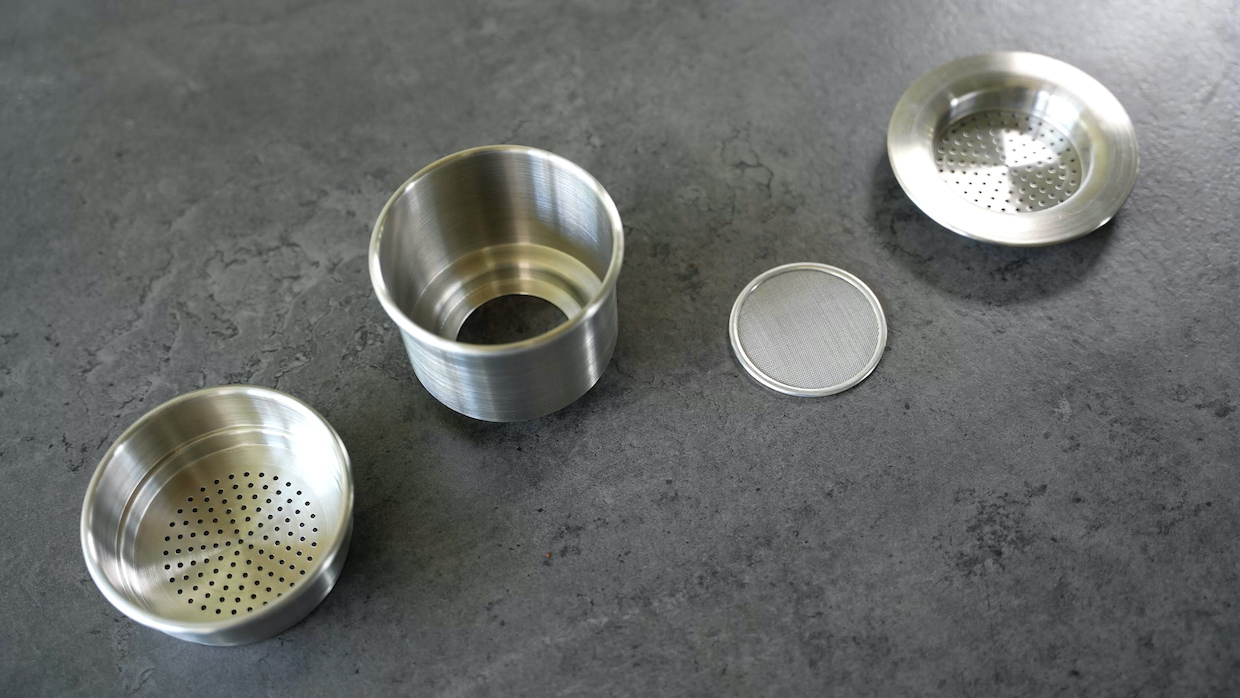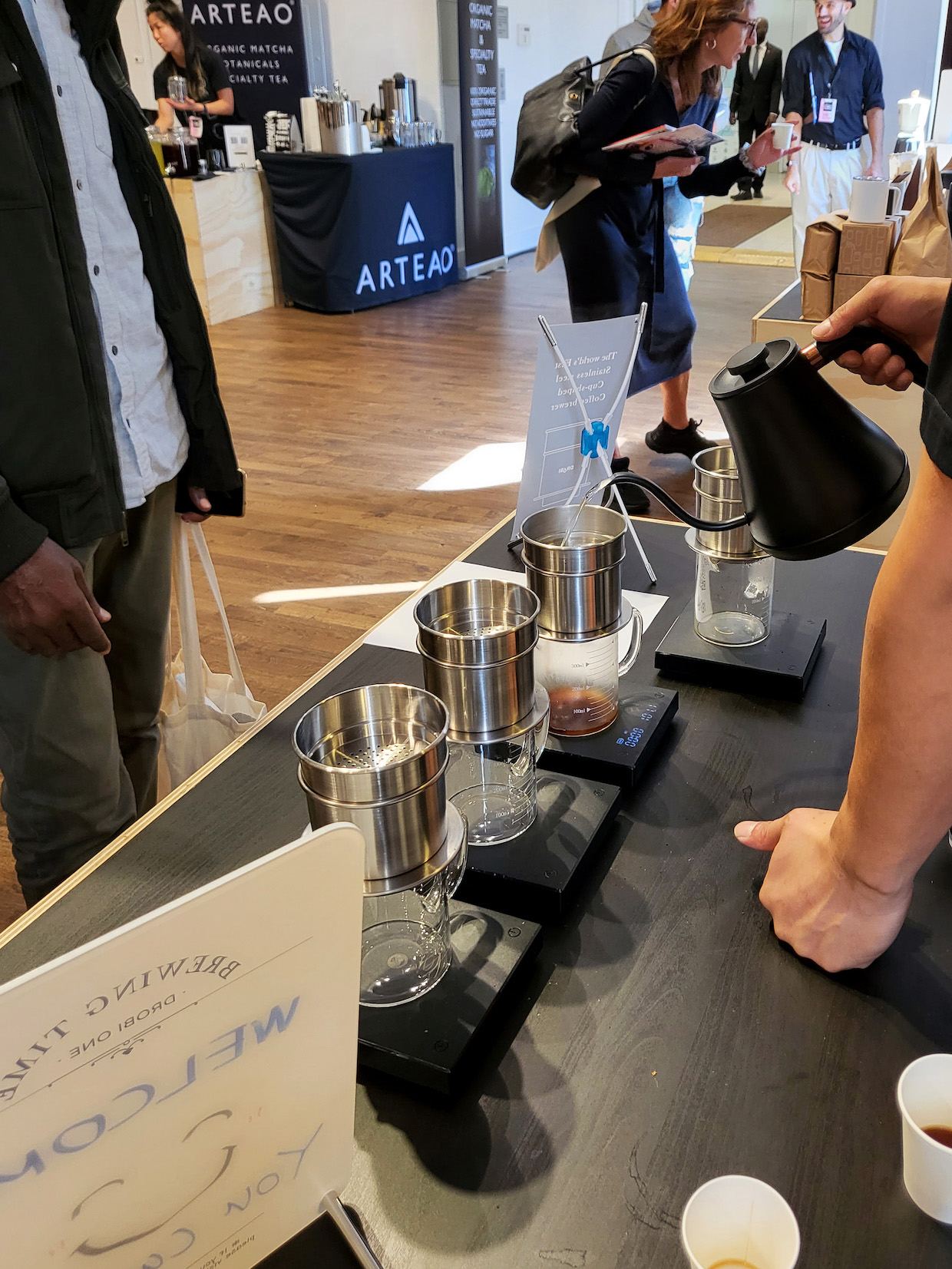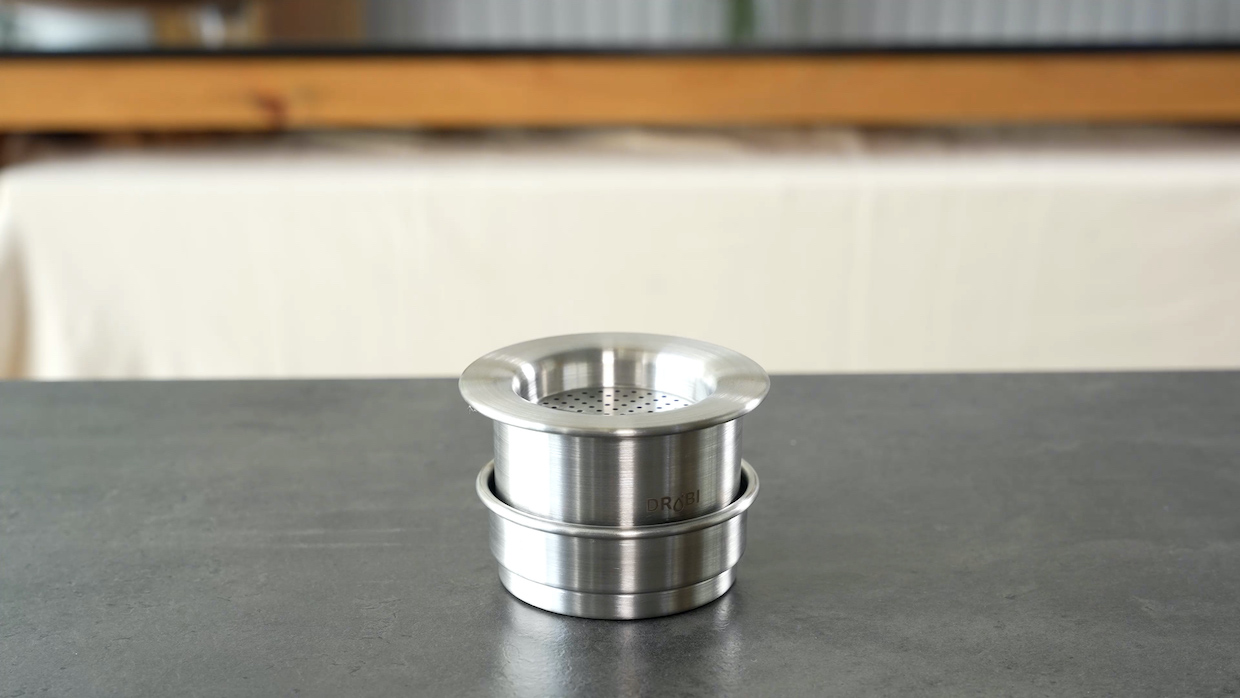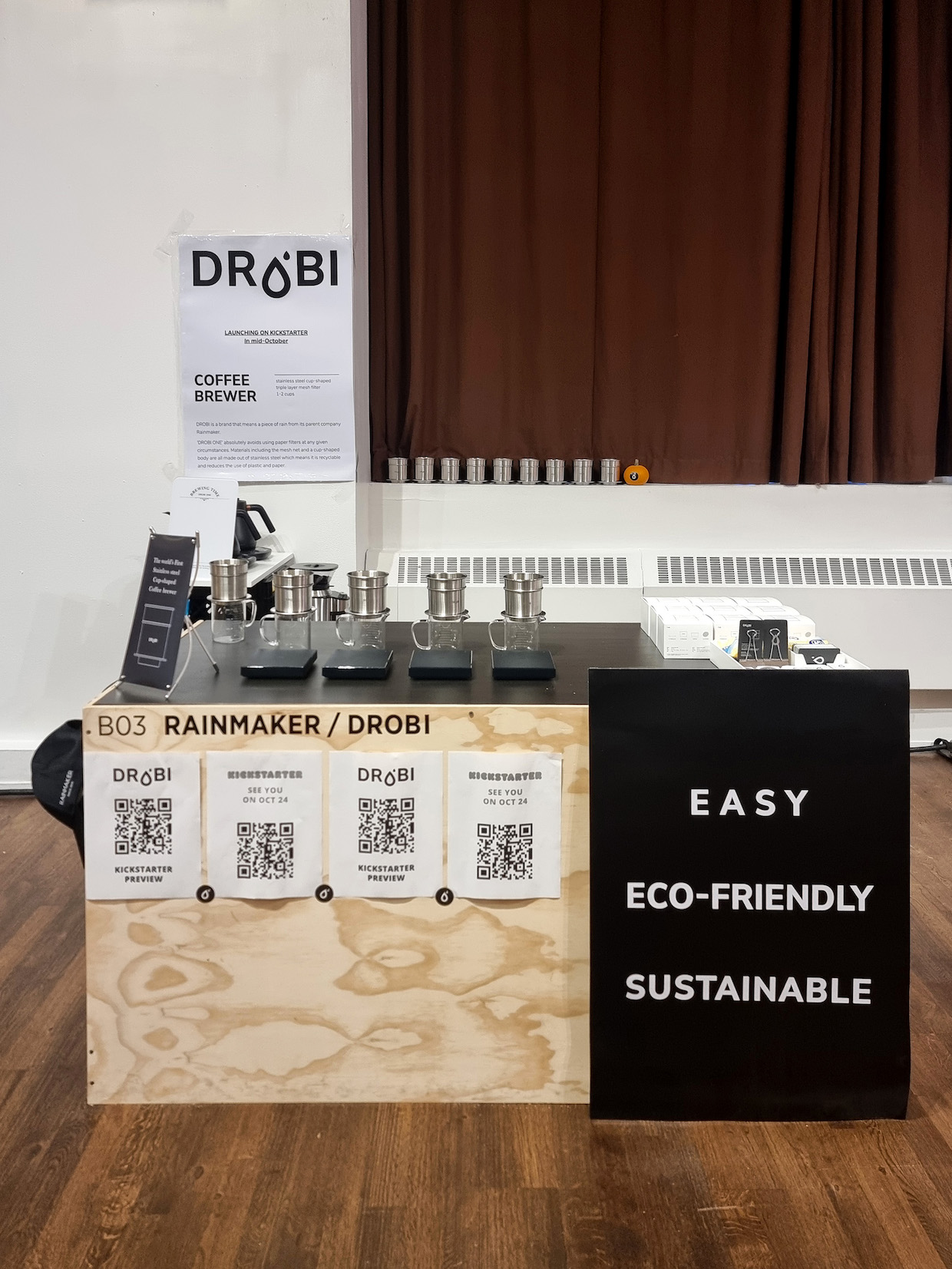Adding to a rapidly growing list of “zero bypass” manual pourover brewers hitting the coffee equipment market is the Drobi One, a manual brewer from Korea and New York-based startup Rainmaker.
The Drobi One’s most distinguishable characteristic is its all-metal construction, comprising a stainless steel body with an aluminum ring holding a three-layer steel mesh filter.
The three-piece, cylindrical device is designed to prevent the phenomenon known as bypass, in which water circumvents the bed of ground coffee during brewing.
With the Drobi One, ground coffee is loaded into the bottom of the brewing chamber, while the brewer’s shape forces water to move through the coffee, increasing extraction and reducing the amount of coffee needed for a finished cup.
A crowdfunding campaign for the new brewer has surpassed $9,000 with four weeks left to go, as of this writing.
The Drobi One is approaching the market at roughly the same time as the Melodrip Colum, a conical no-bypass brewer currently crowdfunding for a 2023 release. The seeds of today’s zero-bypass field were first planted with the Tricolate brewer, which launched from Australia in 2018, as well as the larger NextLevel brewer, which hit the market in March 2021.
The Drobi One, meanwhile, is composed of a showerhead top piece that disseminates hot water evenly over the grounds, a middle brew chamber piece and a bottom piece that sits atop a coffee mug or other vessel. The pieces are designed to nest compactly for storage. The three-layer mesh filter also alleviates the need for a paper filter.
“Coffee people use paper filters a lot,” Jiyoung Lim, brand strategist and project planner for Rainmaker, told Daily Coffee News. “This is because the paper filter completely filters out the fine particles, but we wanted to make clean coffee without using a paper filter. To do so, [the Drobi One filter] was made triple so that it could perform as much filtering of fine particles as a paper filter.”
Rainmaker was founded in Seoul, South Korea in 2019 by Seoung-hoi Kim, who is also the inventor of the Drobi One. Originally a product development company commissioned by others, the company in 2020 fully developed and launched a line portable UVC sterilizers. Revenue from that venture has supported the development of the Drobi, according to Lim.
Brewing recommendations for the 1-2-cup Drobi One range from 16-20 grams of coffee and 200-300 grams of water for a finished brew in approximately three minutes. After Rainmaker established an office in Manhattan earlier this year, the device made its public debut at the 2022 New York Coffee Festival.
An initial round of 500 brewers is ready now for shipment to Kickstarter backers as soon as the campaign ends. Approximately 800 more Drobi One brewers will be ready to ship by January, with scaling up to follow, according to the company. The anticipated retail price of the Drobi One is $70.
Does your coffee business have news to share? Let DCN’s editors know here.
Howard Bryman
Howard Bryman is the associate editor of Daily Coffee News by Roast Magazine. He is based in Portland, Oregon.
Comment
3 Comments
Comments are closed.











I am amused at the current craze over “”no bypass” brewing devices. I was first exposed to drinkable coffee in 2004 via a friend who had been playing with the stuff. Up to that point EVERY sample or coffee I’d been offered triggered an instant “spit it out” reaction. That cup I drank eagerly, asked for more, and sent home to “figure it out”. Eighteen years on I’m still working on “figuring it out” but have made some progress.
That first cup, which prompted a DEMAND to brew another one, straightaway, was brewed in a tiny french press then diluted to drinking strength, a process I later learned is referred to as “bypass brewing” so I’ve been doing it for nigh on twenty years now.
I also use a number of other brew methods and protocols which are NOT bypass, but this method opens many doors because of its flexibility. That’s why I find this recent trend toward “non-bypass” so fascinating.
This device,however, does look interesting. I think I’ll waltz on over to Kickstarter and check it out.
I think you are confused by what the non-bypass drippers are trying to accomplish. When we refer to bypass in a typical conical shaped dripper (ie: v60, kalita, chemex…ect) we are talking about the water that escapes the coffee bed by flowing through the sides of the filter during drawdown which crest an uneven extraction. The idea with the no bypass drippers is that all the brewing water flows through the coffee bed, creating a more full and even extraction. This would also make it much easier to create a cup of coffee that has a lot of strength but is well extracted so one could add water via bypass after the brew to no I’ll effects.
The problem I have with this particular dripped is the material. Heat retention is extremely important to a good extraction, so why make a dripper from metal heat sink?
I get your point. it appears the bypass from previous “drippers” and such is not controllable, though I believe it would be predictable. I suppose the main issue with this is there is a lack of uniformity in the resulting brew.. some fractions are very lightly extracted, others more completely, and still some fall somewhere in the middle. These various fractions them blend together in the finished cup. This type of nobypass brewer does eliminate that result by assuring ALL the water passes through the bed of coffee, hopefully at an even rate.
As to the het sink idea.. yes, that is there. But for decades the venerable Chemex method had a massive glass vessel in fairly direct contact with the cone-shaped filter, providing rather massive contact surface. No one seemed to care much, that pourover method is one of the most popular (though not MY favourite). I hold that the Able Kone was a clear improvement, as the shape of it holds the cone away from full contact wiht the glass, thus transferring far less heat into the vessel (my favourite method of using the Kone is to simply drop the filter into a wide mouth mason jar. NO contact except at the “ring” where the jar meets the metal cone. Smaller batches the coffee bed is well below the contact line, and one should not be doing immersion brewing with this method anyway, regulating the pour to wet but not flood. Not often done, and why I rarely will order a pourover at most shops.
When I use my french press, the concentrate is evenly extracted, then transferred to the larger vessel and fully diluted to proper strength. This results in a very smooth cup yet with full flavour. This method comes very close to a very well-run Chemex type pourover.
I did order this new “metal heat sink” non-bypass brewer, When it comes I will explore its capabilities. If I don’t like it I’m sure some coffee loving friend of mine will accept it and use it. This has been the fate of some of the other “new” brew tools I’ve come accross.
Dontchya just love the way this whole coffee “thing” is so infinietly variable, so many “new” ideas and methods coming round to explore, more control over every aspect of the value chain from dirt to my tongue…… how many have dedicated their working lives to further this thing enabling us to enjoy it so much more?